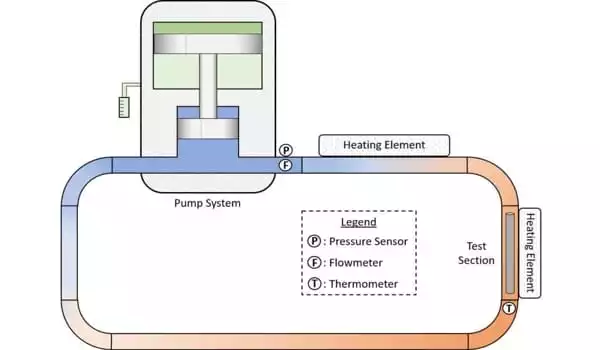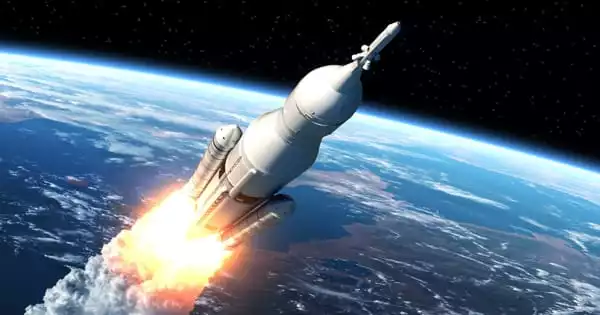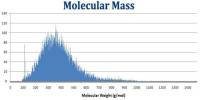Nuclear thermal propulsion technology produces high thrust while using half the propellant of chemical rockets. The heat from the reactor is transferred to a liquid propellant by the system. The heat transforms the liquid into a gas, which expands through a nozzle to provide thrust and propel the spacecraft.
Nuclear thermal propulsion, which uses the heat produced by nuclear reactions as fuel, could one day be used in human spaceflight, possibly even missions to Mars. Its development, on the other hand, poses a challenge. On a regular basis, the materials used must be able to withstand high heat and bombardment with high-energy particles. A doctoral student in nuclear engineering is contributing to research that could make these advancements more feasible.
Will Searight, a nuclear engineering doctoral student at Penn State, is helping to fund research that could make these advancements a reality. He published the results of a preliminary design simulation in Fusion Science and Technology, an American Nuclear Society publication.
Nuclear thermal propulsion, which uses heat from nuclear reactions as fuel, could be used one day in human spaceflight, possibly even for missions to Mars. The materials used must be able to withstand high heat and the bombardment of high-energy particles on a regular basis.
Searight simulated a small-scale laboratory experiment known as a hydrogen test loop to better understand nuclear thermal propulsion. The setup simulates the operation of a nuclear reactor in space, where flowing hydrogen travels through the core and propels the rocket – at temperatures of nearly 2,200 degrees Fahrenheit. Searight created the simulation using dimensions from detailed drawings of tie tubes, which make up a large portion of the test loop through which hydrogen flows. The drawings were provided by industry partner Ultra Safe Nuclear Corporation (USNC).
“Understanding how USNC’s components behave in a hot hydrogen environment is critical to getting our rockets into space,” said Searight. “We’re thrilled to be collaborating with one of NASA’s primary reactor contractors on its space nuclear propulsion project, which aims to produce a demonstration nuclear thermal propulsion engine within a decade.”

Searight used Ansys Fluent, a modeling software, to design a simulation loop from a stainless steel pipe with an outer diameter of about two inches, with the help of Leigh Winfrey, associate professor and undergraduate program chair of nuclear engineering. The loop is connected to a hydrogen pump in the model and circulates hot hydrogen through a test section adjacent to a heating element.
Searight discovered that, while consistent heating of hydrogen to 2,200 degrees Fahrenheit was possible, a heating element directly above the test section was required to prevent a reduction in heating. The modeling software data revealed that the flow of hydrogen through the test section was smooth and uniform, reducing uneven heat distribution through the loop, which could jeopardize the setup’s safety and lifespan. The results also confirmed that stainless steel would allow for more convenient and cost-effective loop construction.
“We are excited to take the first steps toward developing a unique capability for extreme environment simulation at Penn State,” Winfrey said. “This preliminary work will allow us to pursue research that could have a significant impact on the future of space exploration.”
With additional research, Searight’s preliminary work could enable expanded testing of materials that could one day be used to create faster, more efficient space travel using reactor-fueled rockets.
ANS recently awarded Searight the George P. Shultz and James W. Behrens Graduate Scholarship. Searight intends to use the award to fund his future work on the test loop. Shultz, a nuclear nonproliferation advocate and Presidential Medal of Freedom recipient who died in February, and Behrens, a previous ANS board member who held numerous positions in the national security sector, are both honored with the $3,000 scholarship.
This work was made possible by a NASA Small Business Innovation Research contract. Engineers on the ground are developing potential propulsion technologies for the first human missions to Mars as NASA’s Perseverance rover approaches the Red Planet. NASA is investigating two types of nuclear propulsion systems: nuclear electric and nuclear thermal.
One major issue with nuclear power in space is that the heat must be discarded in some way, which RTGs can only do by radiating it. Unless you are very far from the Sun, you end up with heat-radiating panels instead of solar panels, with significantly lower energy output per kilogram than solar panels.
















